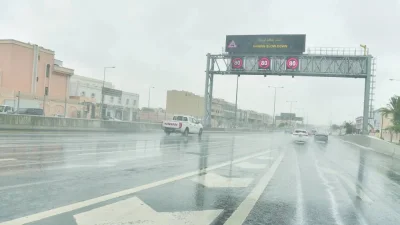In February 2011, an extreme cold snap in Texas led to a major blackout. About 200 energy-generating units faltered, from power plants to wind farms, impacting more than 3 million customers.
Such was the disruption that the US Federal Energy Regulatory Commission (FERC) and the North American Electric Reliability Corporation published a 357-page report with recommendations on how to avert future crises.
Wind forward a decade and the southern US state is again struggling with the fallout from an even wilder winter storm, which killed at least two dozen people and led to power outages for more than 4 million Texans at its peak last week.
Despite the warnings, the incident revealed that Texas power producers had failed to adequately winter-proof their facilities as the 2011 report had advised.
Climate scientists say global warming is increasing the severity of extreme weather events, from major hurricanes hitting the Gulf Coast to wildfires in California.
Some evidence has also linked the warming Arctic to more frequent and unusually cold weather in the United States, although the issue is still being debated.
In 2020, natural disasters cost the United States $95 billion, up from $51 billion in 2019, including “historic” wildfires and a record 30 storms in the North Atlantic, according to reinsurance firm Munich Re.
The FERC has said it would examine threats posed by climate change and extreme weather to the country’s electric reliability after the latest Texas blackouts, with its chairman noting the effects of climate change were “already apparent”.
Stronger financial incentives and regulations would be needed from government to mandate energy providers to make the necessary changes, he said.
Ultimately the question is what people, as taxpayers or energy consumers, are willing to pay to avoid future crises.
Alongside “hardening” measures to make utilities and power distribution networks more durable, parallel investments are needed in other things to protect the public during emergencies, such as opening more warm shelters in winter.
The debate over how to fund such efforts has been raging in California, where wildfires burned through a record 4 million acres (1.6 million hectares) across the state in 2020, causing several blackouts and killing at least 31 people.
The state’s overhead power lines are particularly fire-prone and have caused several deadly wildfires, leading to suggestions that the cables should be buried underground instead.
But California utility Pacific Gas and Electric Company (PG&E) says this would be prohibitively expensive, costing $3 million per mile converted.
PG&E filed for bankruptcy in 2019, citing potential liabilities topping $30 billion from wildfires linked to its equipment.
Despite the challenges, some changes have been made that can help prevent situations like the Texas power outages.
Smart electricity meters in homes, for example, send live data to utilities about energy usage, providing valuable information to prepare for and react to system issues.
The Florida Power & Light Company has used its “smart grid” to achieve significant reliability improvements in the face of major storms, which includes smart meters and drones to survey damage to the electric system remotely.
Instead of the traditional model of one big power plant supplying electricity, technology has enabled smaller community-based power generation, which is connected to the grid but can operate independently if there is an outage on the main system.
In Puerto Rico, where Hurricane Maria devastated the island in 2017 and led to a complete blackout, plans are being rolled out to create eight regional micro-grids, each producing their own renewable energy.
Whichever measures are employed, experts say the increase in extreme weather as the planet heats up is amplifying the need for better preparation. – Thomson Reuters Foundation



